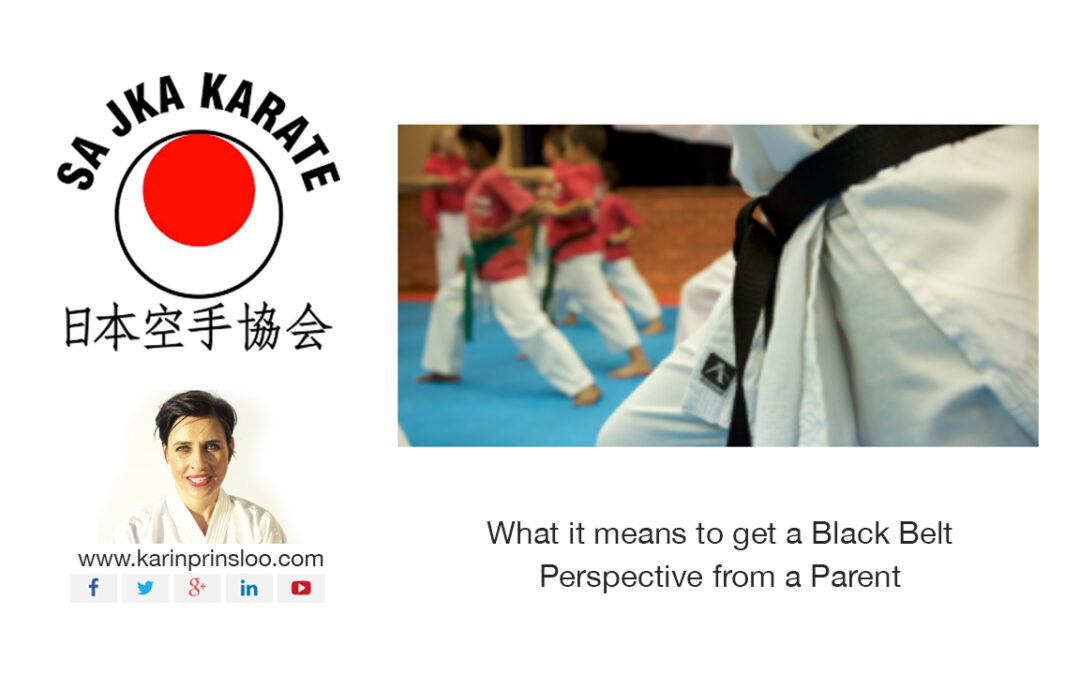
by [email protected] | Apr 11, 2018 | Articles
What it means to get a Black Belt – Stirling Karate – Karate Karrinyup
Perspective from a parent
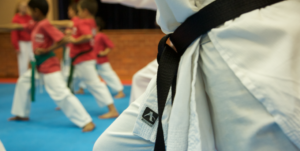 A Parent from our dojo wrote the following letter after their teenage son passed their shodan (1st dan black belt).
A Parent from our dojo wrote the following letter after their teenage son passed their shodan (1st dan black belt).
This really reminded me of the meaning of getting your black belt. Even though I’ve had the privilege of witnessing many karate-ka achieving their black belt through Pinetown JKA Karate. It is easy to forget how incredibly valuable it is to achieve this. If you ever have any doubt if it’s worth getting a black belt, read below.
To Parent that wrote this, thank you for sharing your thoughts with us. It will perhaps motivate someone out there not to give up!
The letter: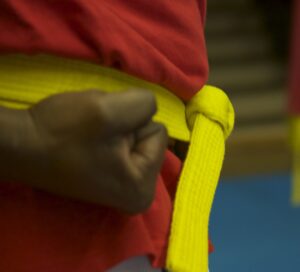
After watching my son from the side of the Pinetown JKA dojo for 7 years, I can honestly say that the journey has been one of a thousand steps.
And for my wife and I to be there as parents, beside him, each of those steps has been a life lesson of patience, commitment and the true meaning of spirit.
This journey was inspired, as with many of the kids at the dojo, by the need for my son to learn to defend and protect himself. Because he cannot and probably still will not hurt a fly, unless he is forced to defend himself now…
What has resulted is not a revolution but an evolution of his mental strength, his respect for others and his self-control. The culmination of this has been his recent achievement of Shodan Black Belt, his first Black Belt. And it has only been achieved through the careful mentoring and spirit that is nurtured by Karin Prinsloo and Pinetown JKA, knowing when it was time to take the final step on this journey.
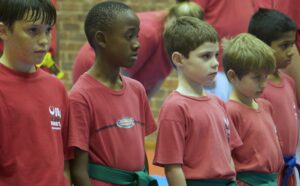 The real winner at the end of this first journey, like one’s first trip overseas, is not just our son’s awakening. It’s been us, as parents, being the beneficiary of a young boy showing us the first rays of being a man, of a character forming and being steeled through hours of dedication, perspiration and effort.
The real winner at the end of this first journey, like one’s first trip overseas, is not just our son’s awakening. It’s been us, as parents, being the beneficiary of a young boy showing us the first rays of being a man, of a character forming and being steeled through hours of dedication, perspiration and effort.
His earning a black belt has literally been like a light being switched on. He is ready and hungry for more, thirsty and eager develop this new knowledge that has been attained.
This is hopefully the beginning of many more journeys to his next black belt. Oss.
www.stirlingkarate.com.au
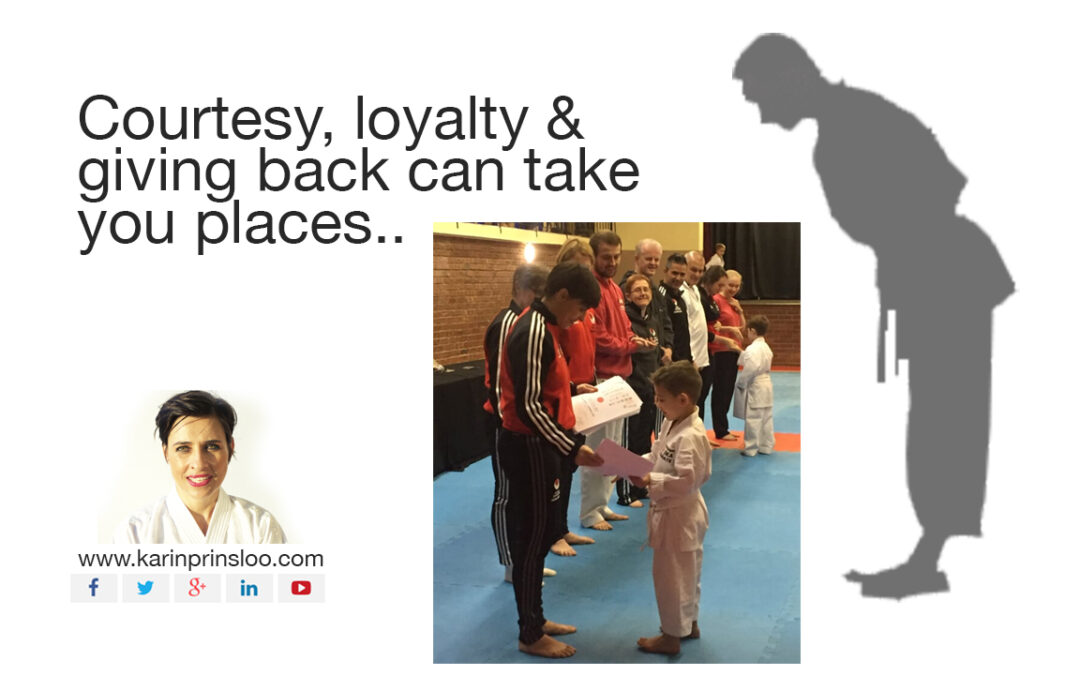
by [email protected] | Jul 19, 2017 | Articles, Uncategorised
There are certain individuals, adults and children, that everyone adores, respects and gravitate towards.
The kind of people you would do anything for. I see this in my dojo, what  makes those individuals different?
makes those individuals different?
Without delving deep into the world of upbringing, parenting and childhood events, I believe the following behaviour contributes a lot to being “those individuals”.
1) Having manners and being courteous.
Showing politeness towards others in your behaviour, consistently. 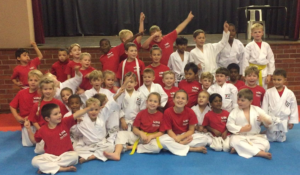
For example:
- Using a person’s name or rank at the end of your reply “yes John”, thank you ma’am”, “yes Sensei” or “Thank you Senpai”.
- Standing up when someone speaks to you. Offering to carry bags.
- Opening the door for someone.
- Offer your seat to a lady or someone older.
- Say thank you and please.
- Children getting up and greet guests arriving at your home or dojo.
- Making an effort to great people you know, even if you need to walk a few meters.
The list goes on..
It takes discipline and hard work to consistently show courtesy, but it makes a world of difference and will open doors for you in your life.
2) The second behaviour is loyalty.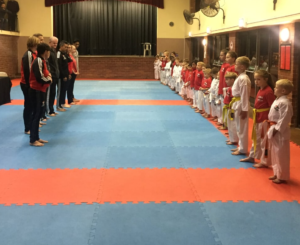
With this, I mean acknowledge and remember the people that contributed to your life path.
- The people that helped you along the way.
- The ones that played an important role at some stage of your life.
- Show gratitude towards those individuals; do not just take it for granted. They never needed to help you or assist you in any way. They gave their time and expertise to you which is one of the biggest gifts anyone can give you.
It does not necessarily mean you should stay with the individuals that helped you. It simply means showing that you remember where you came from.
Examples of this would be: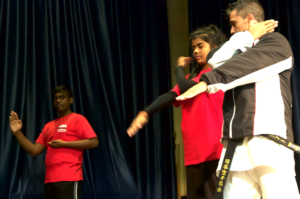
- Give them a call or going to visit every now and then.
- Stay interested in their cause, support them, even if just a like on Facebook. Social media makes it easy to stay in touch.
- If there is an opportunity, let them know you appreciate the role they played in your life
Many of us achieved because of people that gave selflessly; teachers, instructors, mentors, that helped us along our way, never forget them.
3. The third behaviour is giving back.
There are and have been people that contributed to your life. There comes a time when you need to pay this forward and do the same for others.
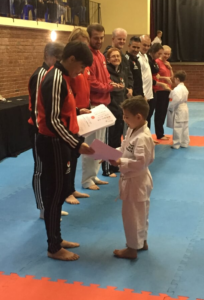 You need to do this unreservedly and without expecting anything in return. There will be grateful people and others that won’t be. Do it because someone once did it for you.
You need to do this unreservedly and without expecting anything in return. There will be grateful people and others that won’t be. Do it because someone once did it for you.
Give back not because of who they are but who you are..
How?
- Volunteer to assist in teaching others.
- Help at events or causes that once served you.
I firmly believe a person displaying these behaviours, especially when they are young, will find himself surrounded by a world of opportunity and will experience a lot of inner happiness and joy.
www.stirlingkarate.com.au
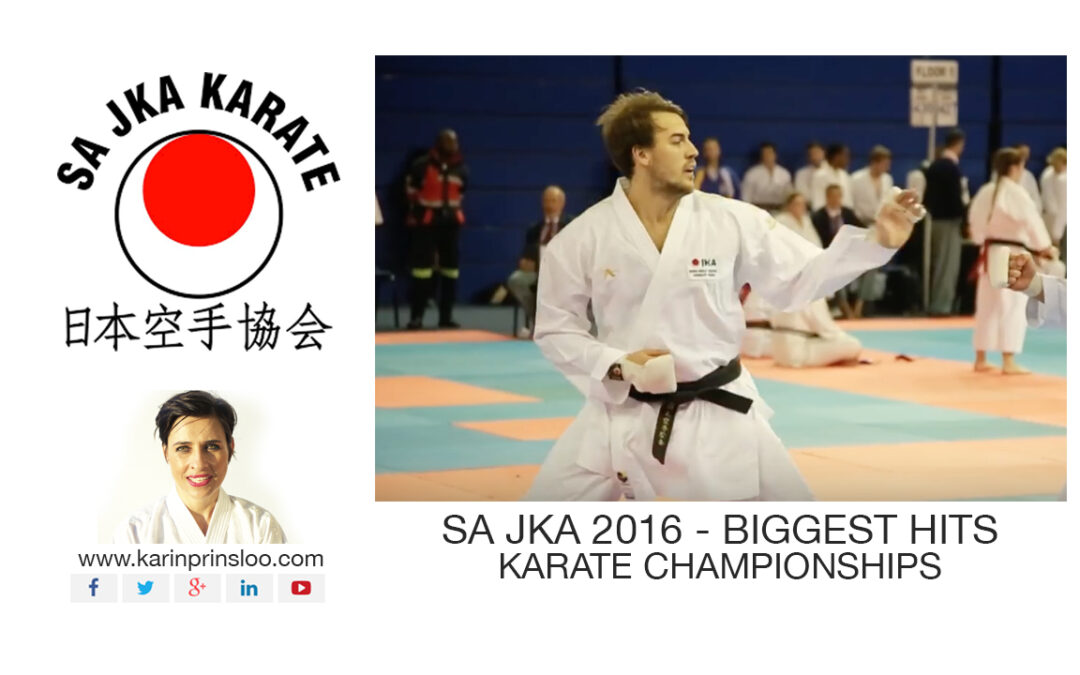
by [email protected] | Jan 10, 2017 | Tournaments
SAJKA Championships 2016 Kumite
Here are the biggest hits from 2016 SA JKA National Championships. This is always a well-organized prestigious event with around 3 000 entries taking place at the Standard Bank Arena in Johannesburg. Young, old, junior and senior compete with great spirit.
The Essence of SA JKA Shotokan Karate
JKA Shotokan is symbolised by two circles: a large circle representing the sky against which is a smaller red circle, representing the sun, is superimposed.
SOUND MIND / GOOD TECHNIQUE
Like the two interacting circles which represent JKA Shotokan Karate, JKA Shotokan Karate has developed and continued to grow into two crucial factors, namely:
Sound Mind
Good Technique
As Nakayama Sensei (Instructor) once told the writer when he asked him why the Five Maxims of Karate are important, he answered:
Self-defence is not only a physical thing. Sound mental strategies and attitudes are of far greater importance when it comes to protecing once’s self, one’s family and one’s nation. For example it is hard to hit somebody who offers you genuine respect (the 4th maximums)
www.karate.co.za
www.stirlingkarate.com.au
www.karinprinsloo.com
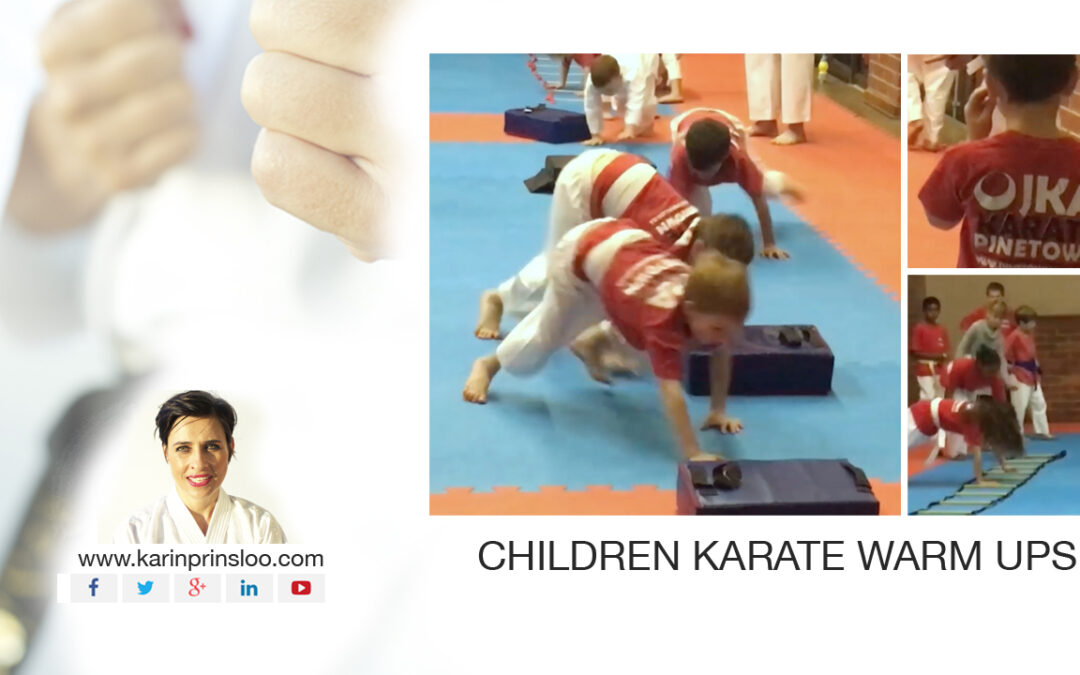
by [email protected] | Aug 20, 2016 | Karate Kids, Video
Karrinyup Karate – 2 Nerita Way – Stirling Karate
Karate warmup for children aiding in development.
www.stirlingkarate.com.au
To be able to teach young children karate, the instructors will need to understand something about child development and structure the classes in such a way as to accommodate, compliment and reinforce this.
A good warm up can be used to address a lot of these important aspects.
The following needs to be taken into consideration:
Physical Development 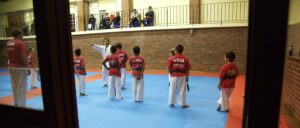
Design warm ups for children not only for preparing the body for karate, but to improve skills such as coordination, agility, speed, power, core strength and flexibility.
Intellectual Development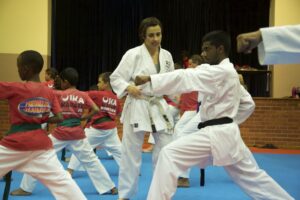
The young child’s mind is like sponge when it comes to soaking up information. They love learning new things. Remembering sequences, patterns and following instructions stimulates intellectual development. E.g. Performing the ladder drills while the line is moving fast, enhances focus and concentration.
Emotional Development 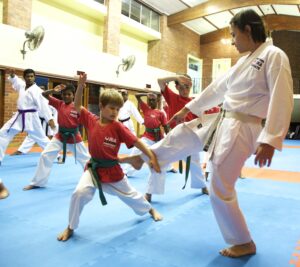
Young children relates better to “feel” rather than “reason”. Exercises must “feel” like fun to do. They still will be developing their understanding of feelings. This is a vitally important skill which will aid them in eventually becoming well-balanced adults. Instructors should show constant support and offer plenty of reassurance to the children, helping them to develop their confidence and sense of self.
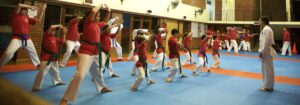
Social Development
Any form of group learning or exercise is a “social experience”, wherein the young child will not only be learning the subject being taught, but also certain aspects of interpersonal skills and teamwork. This is where they learn about responsibility, discipline and good manners. To ”wait their turn” and use “please” and “thank you” (and “Oss”) etc. They will also learn about the appreciation of law and order.
In conclusion: Young children has energy, a short attention span, learn quickly and love games. This means train in a safe environment, short (30/45min), focus on “doing”, plenty variety and must be fun. Design and pre-plan your warm-ups around these aspects and great results will show..
References:
Prof. J R Lee-Barron PhD FIMAS
President, Institute of Martial Arts and Sciences
Dean, Faculty of Martial Arts
www.institute-of-martialarts-and-sciences.com
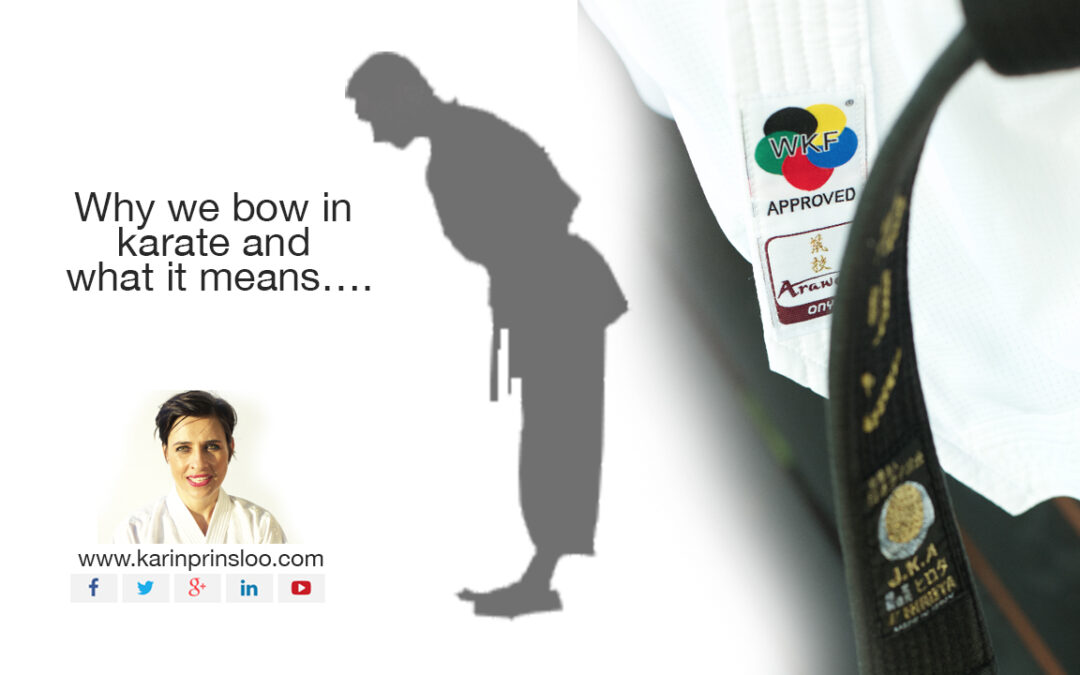
by [email protected] | Aug 5, 2016 | Articles
Why we bow in karate and what it means….
Karrinyup Karate – 2 Nerita Way – Stirling Karate.
www.stirlingkarate.com.au
 Bowing is probably the feature of Japanese etiquette that is best known outside Japan, especially present in Japanese Martial Arts such as Karate.
Bowing is probably the feature of Japanese etiquette that is best known outside Japan, especially present in Japanese Martial Arts such as Karate.
Bowing is considered extremely important in Japan, so much so that, although children normally begin learning how to bow from a very young age, companies commonly provide training to their employees in how to execute bows correctly.
Basic bows are performed with the back straight and the hands at the sides (boys and men) or clasped in the lap (girls and women), and with the eyes down. Bows originate at the waist. Generally, the longer and deeper the bow, the stronger the emotion and the respect expressed.
www.karinprinsloo.com

 A Parent from our dojo wrote the following letter after their teenage son passed their shodan (1st dan black belt).
A Parent from our dojo wrote the following letter after their teenage son passed their shodan (1st dan black belt).
 The real winner at the end of this first journey, like one’s first trip overseas, is not just our son’s awakening. It’s been us, as parents, being the beneficiary of a young boy showing us the first rays of being a man, of a character forming and being steeled through hours of dedication, perspiration and effort.
The real winner at the end of this first journey, like one’s first trip overseas, is not just our son’s awakening. It’s been us, as parents, being the beneficiary of a young boy showing us the first rays of being a man, of a character forming and being steeled through hours of dedication, perspiration and effort.




 You need to do this unreservedly and without expecting anything in return. There will be grateful people and others that won’t be. Do it because someone once did it for you.
You need to do this unreservedly and without expecting anything in return. There will be grateful people and others that won’t be. Do it because someone once did it for you.






 Bowing is probably the feature of Japanese etiquette that is best known outside Japan, especially present in Japanese Martial Arts such as Karate.
Bowing is probably the feature of Japanese etiquette that is best known outside Japan, especially present in Japanese Martial Arts such as Karate.